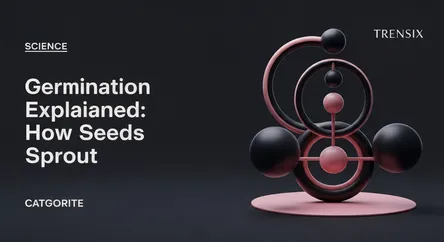Science
Germination Explained: How Seeds Sprout

Discover the fascinating process of germination, where a plant seed sprouts into a seedling. Learn the conditions needed for this vital stage of life.
What is it?
Germination is the fundamental process by which a plant grows from a seed. This biological marvel begins when a dormant seed, containing an embryo and a food supply, encounters the right conditions. Essential factors include water, which hydrates the seed; oxygen for metabolic processes; and a suitable temperature. Once these conditions are met, the seed awakens. The first part to emerge is the radicle, which develops into the primary root to anchor the plant and absorb water, followed by the shoot (plumule), which reaches for sunlight to begin photosynthesis.
Why is it trending?
Interest in germination has surged with the rise of home gardening, urban farming, and a broader desire for sustainable living. People are increasingly keen on growing their own food, from balcony herbs to backyard vegetables, making this a practical skill. It's also a popular hands-on educational activity for all ages, demonstrating the plant life cycle in real time. The 'grow-your-own' movement, amplified by social media, showcases the satisfying journey from seed to harvest, linking the process to wellness and self-sufficiency in a tangible way.
How does it affect people?
Germination is the bedrock of agriculture and our global food supply. Every major crop, from wheat to rice, begins with this vital process. On a personal level, it empowers gardeners and provides a rewarding hobby that fosters a connection with nature. Furthermore, the health and wellness industry has popularized sprouted grains and seeds, like alfalfa and mung bean sprouts, which are celebrated for their enhanced nutritional profiles and digestibility. As a foundational concept in biology, it teaches us about the resilience and complexity of life and the environmental factors that sustain it.